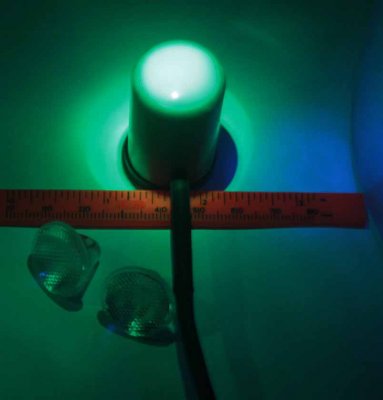I was curious about effect of lenses, so went into the lab to take a look. I used a 3-watt green LED (easy to see) and took a PAR measurement with no lens and measured the diameter of the light's footprint (PAR of 39 and a lighted circle measuring 46mm in diameter.) When I placed a 40-degree lens on the LED, the light footprints PAR fell to 11, and the illumination circle became indistinct but something on the order of 65mm. With a 60-degree lens, PAR fell to 8 and the light pattern larger but 'fuzzy.' Some of the PAR loss is undoubtedly due to absorption by the lens itself (not sure how much though.) It is obvious that blending of colors is increased by higher degree lenses. Maybe you've got all this figured out already but it did make me curious enough to spend a few minutes in the lab.The light is 8" from the waterline and 24" to the sand bed. I'm also trying to cover 30" width so I'm thinking I may need use 120s.





















